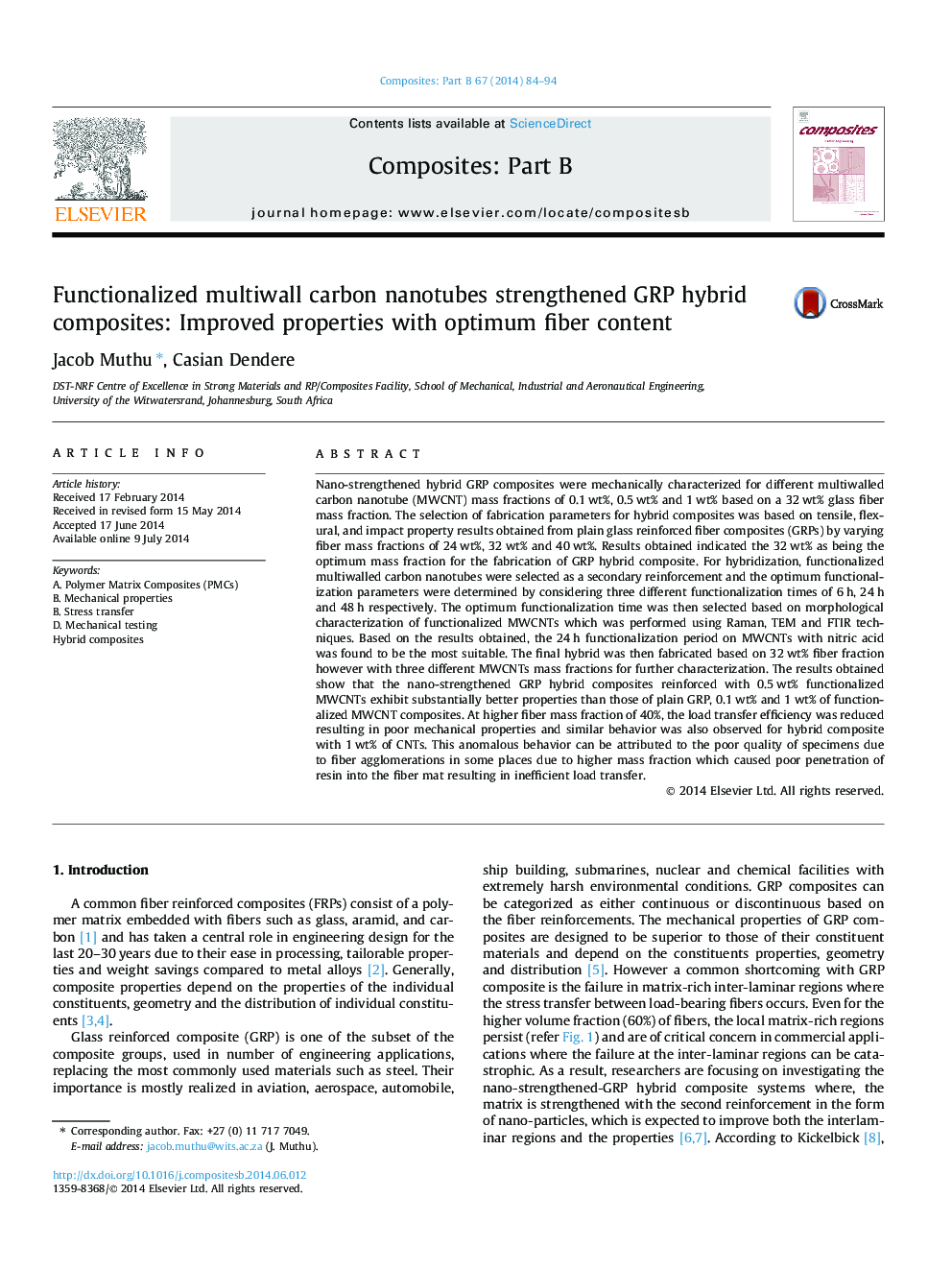| Article ID | Journal | Published Year | Pages | File Type |
|---|---|---|---|---|
| 7213355 | Composites Part B: Engineering | 2014 | 11 Pages |
Abstract
Nano-strengthened hybrid GRP composites were mechanically characterized for different multiwalled carbon nanotube (MWCNT) mass fractions of 0.1Â wt%, 0.5Â wt% and 1Â wt% based on a 32Â wt% glass fiber mass fraction. The selection of fabrication parameters for hybrid composites was based on tensile, flexural, and impact property results obtained from plain glass reinforced fiber composites (GRPs) by varying fiber mass fractions of 24Â wt%, 32Â wt% and 40Â wt%. Results obtained indicated the 32Â wt% as being the optimum mass fraction for the fabrication of GRP hybrid composite. For hybridization, functionalized multiwalled carbon nanotubes were selected as a secondary reinforcement and the optimum functionalization parameters were determined by considering three different functionalization times of 6Â h, 24Â h and 48Â h respectively. The optimum functionalization time was then selected based on morphological characterization of functionalized MWCNTs which was performed using Raman, TEM and FTIR techniques. Based on the results obtained, the 24Â h functionalization period on MWCNTs with nitric acid was found to be the most suitable. The final hybrid was then fabricated based on 32Â wt% fiber fraction however with three different MWCNTs mass fractions for further characterization. The results obtained show that the nano-strengthened GRP hybrid composites reinforced with 0.5Â wt% functionalized MWCNTs exhibit substantially better properties than those of plain GRP, 0.1Â wt% and 1Â wt% of functionalized MWCNT composites. At higher fiber mass fraction of 40%, the load transfer efficiency was reduced resulting in poor mechanical properties and similar behavior was also observed for hybrid composite with 1Â wt% of CNTs. This anomalous behavior can be attributed to the poor quality of specimens due to fiber agglomerations in some places due to higher mass fraction which caused poor penetration of resin into the fiber mat resulting in inefficient load transfer.
Keywords
Related Topics
Physical Sciences and Engineering
Engineering
Engineering (General)
Authors
Jacob Muthu, Casian Dendere,
